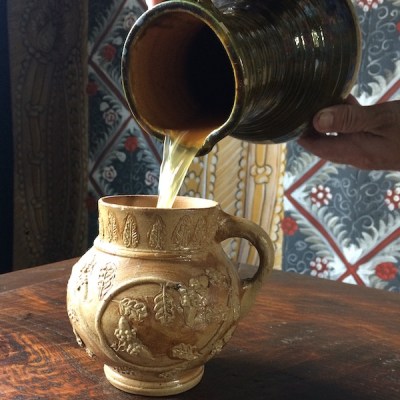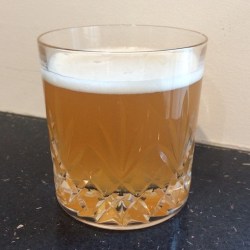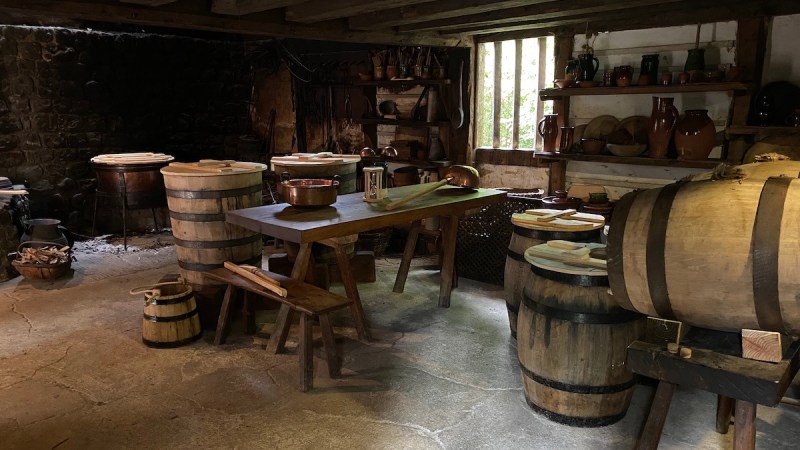Are you interested in the history of beer, food science, or just a fan of gathering “um, actually” details about things? Well you’re in for a treat because FoodCult (exploring Food, Culture, and Identity in early modern Ireland) has a fantastic exhibition showcasing their recreation of beer last brewed in the sixteenth century by putting serious scientific work into it, and learning plenty in the process.

The recipes, equipment and techniques are straight from what was used at Dublin Castle in the late 1500s. This process yielded very interesting insights about what beer back then was really like, how strong it was, and what was involved in the whole process.
Documentation from the era also provides cultural insight. Beer was often used to as payment and provided a significant amount of dietary energy. Dublin Castle, by the way, consumed some 26,000 gallons per year.
In many ways, beer from back then would be pretty familiar today, but there are differences as well. Chief among them are the ingredients.
While the ingredients themselves are unsurprising in nature, it is in fact impossible to 100% recreate the beer from 1574 for a simple reason: these ingredients no longer exist as they did back then. Nevertheless, the team did an inspired job of getting as close as possible to the historical versions of barley, oats, hops, yeast, and even the water.
 That’s not all. Period-correct brewing techniques and equipment — all carefully made by hand — also provided an authentic process as well as insight into the fact that beer-making required a variety of unique skills and craftsmanship.
That’s not all. Period-correct brewing techniques and equipment — all carefully made by hand — also provided an authentic process as well as insight into the fact that beer-making required a variety of unique skills and craftsmanship.
How did it turn out? Very well! The team successfully produced Dublin Castle beer from 1574, and repeated the process a few times with ingredient variations to help understand and highlight what makes the original distinctive. The finished Dublin Castle beer had a hazy, golden appearance due to added oats and minimal filtering. It tasted like a mild, light, present-day bitter with an alcohol content between 4.5-5%.
Beer brewing is something still enjoyed by many today, and even homebrewers can leverage technology into the process. Homebrewing can be considerably more “hacky” that that, however. A suitably motivated hacker can brew beer using only a coffee maker and ingredients found on a moderately-sized research vessel.
[via Phys.org]

















Anyone noticed, young people these days are drinking a lot less?
Well, it´s moot to have some beers with your friends if they are on Tiktok.
Even before, when the smartphone craze started, there was some “beer apps” around using the accelerometer for some fun. Symbolically, it was prefiguring the shift to come.
Yes … Dublin Castle could set up a meth lab in the dungeons. MDMA often more popular than alcohol.
Netherlands here. They raised the drinking age from 16 to 18. During Covid a lot of pubs closed, bringing the options down a lot. The ones that are still open usually have low attendance and a lot are near bankrupt. The youth isn’t drinking in pubs anymore. Most are still drinking but are drinking at home. Especially the 15-18 year old’s drink at home. So the legal and pub drinking became a lot less, but overall drinking went up. Averages here are based on 100% in total, divided by the amount of citizens. It went from 6.5 liters a year in 2018 to 8.5 liters a year in 2022. When I look around on Friday and Saturday evening, I see a lot of drunk teens. Way more than a few years ago.
To clarify: averages are 100% alcohol. So a bottle of 40% means you have 400ml of alcohol. So last year they sold a bit over 152 million liters of pure alcohol, which in whisky would mean a bit over 380 million.
I don’t know where you are living, but here in Arnhem (also the Netherlands), pubs thrive. special beers, locally brewed. and al the outdoor chairs are full on a sunny day. And not are only chains but small local owners.
As an industry person I can confirm. They drink less, and they are not interested in established beverage categories.
This is absolutely not true in the US. People age 21-25 binge drink the most, and ages 21-29 are the largest consumers of alcohol. If anything their tastes have changed and they’re preferring lower calorie products like “hard seltzer”.
https://www.statista.com/statistics/354265/current-binge-heavy-alcohol-use-among-persons-in-the-us-by-age/
Sanitized data.
People 14-21 binge drink the most.
Once legal it’s loses the ‘forbidden fruit’ positive aspect.
You aren’t motivated to ‘destroy the evidence’ ASAP, like in high school.
How do they know what it tasted like way back then? Hops have genetically changed and our grains are vastly different. I make beer and two batches are never the exact same which is the inyended result, I’m not anheiser busch
And that’s exactly what they say in that study.. There are many variables that can not be replicated exactly, different crops being just one. Their beer is their best guess what it could have been like back then, made with methods and crops available today.
Is 1574 beer pre-Reinheitsgebot beer? so technically no laws should apply to it
Reinheitsgebot was never applied in Dublin castle , for one simple reason, it is not in Germany.
“Cuz, I doth ken I shall ‘ject my vittles!”
“Non’t upin my wagon thou dostn’t!”